News
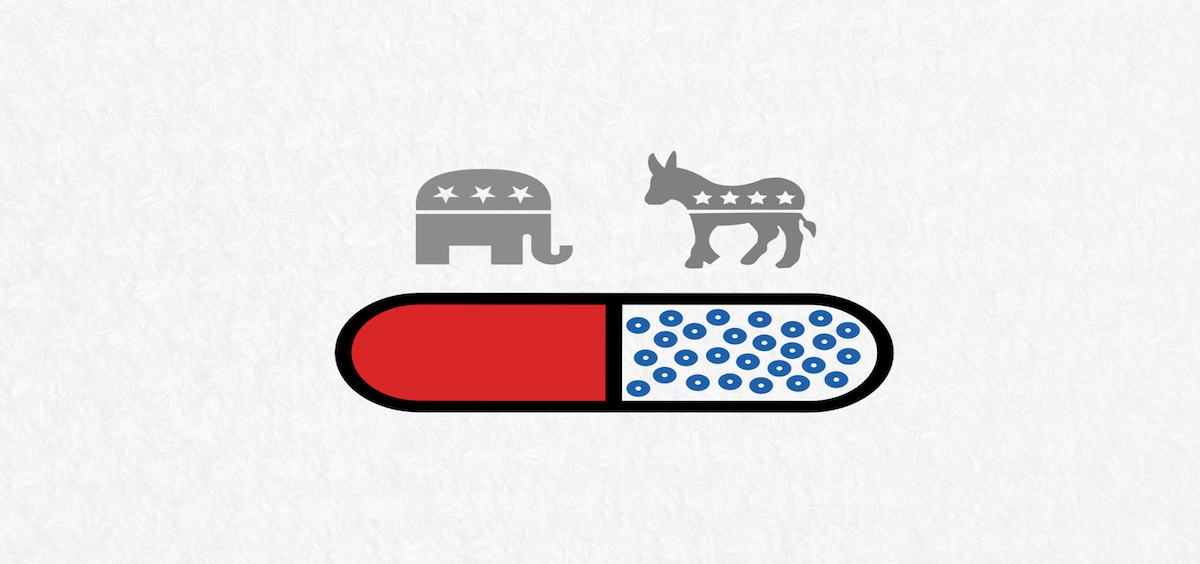
Addiction Battle On The Ballot: Opioid Epidemic A Potent Campaign Issue
By: Aaron Payne | Ohio Valley ReSource
Posted on:
The opioid epidemic is on the agenda for political campaigns from the presidential race down to the local level in the Ohio Valley region. Election Day could shape the response to the crisis in states with some of the nation’s highest rates of addiction and overdoses.
Pat Fogarty, Director of Business Development and Mission Advancement at The Healing Place treatment center in Louisville said he’s seen the political discussion about addiction change for the better.
“There’s less stigma around addiction by the way it’s been approached by our leadership,” he said. “That needs to continue to snowball for the future and not be put on the backburner.”
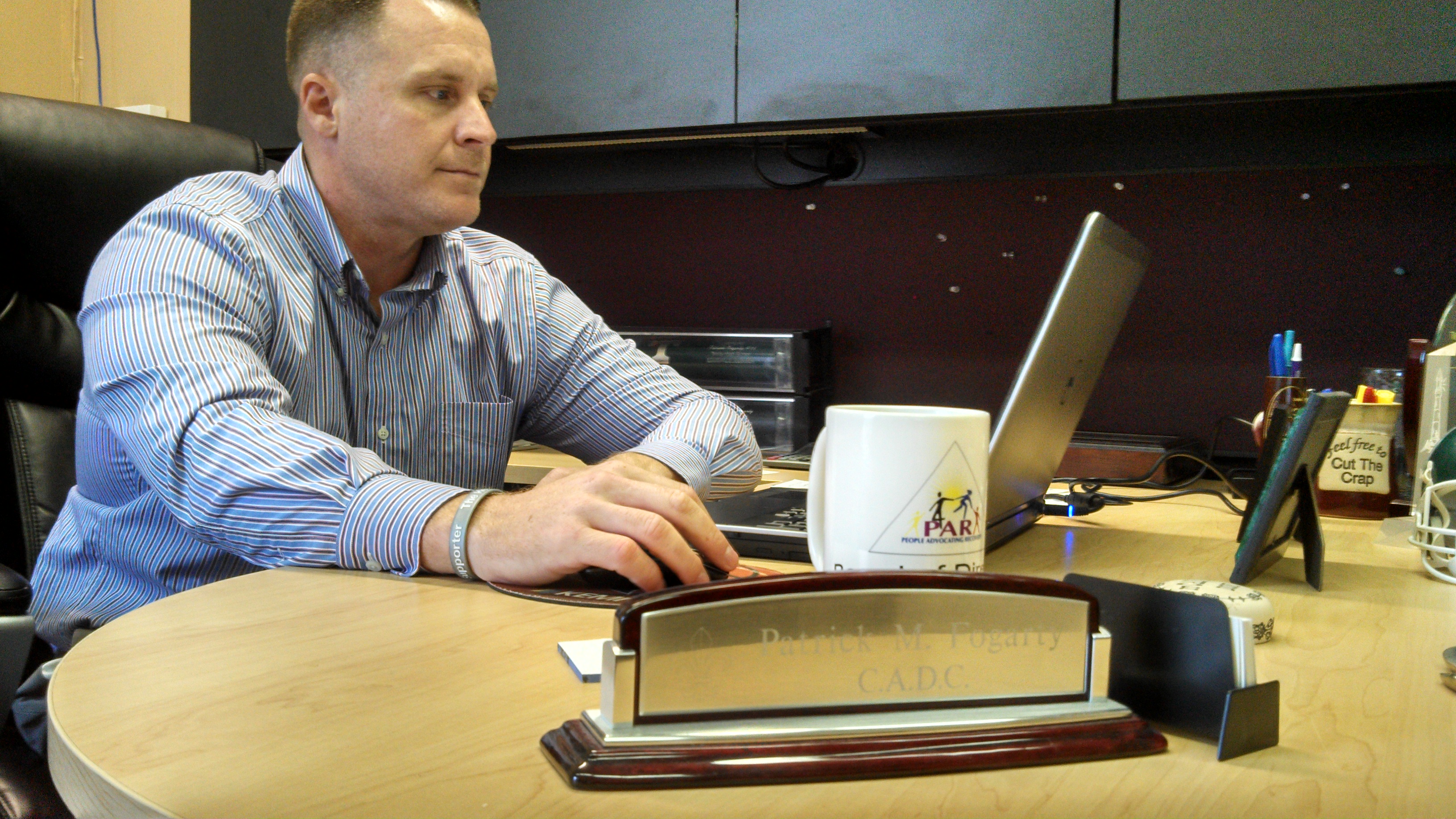
Addiction specialists say that while they’ve seen progress, there is still need for treatment resources, prevention programs, and aid for law enforcement across the region. They hope candidates in this year’s election cycle understand those needs.
The platforms and proposals emerging in several key races in Kentucky, Ohio, and West Virginia indicate that candidates seem to be paying attention. Here’s an overview of what the election could mean for how the Ohio Valley will combat the epidemic.
Kentucky: A Funding Dispute
While The Healing Place has had more treatment resources than in years past, Pat Fogarty believes treatment programs across Kentucky need more.
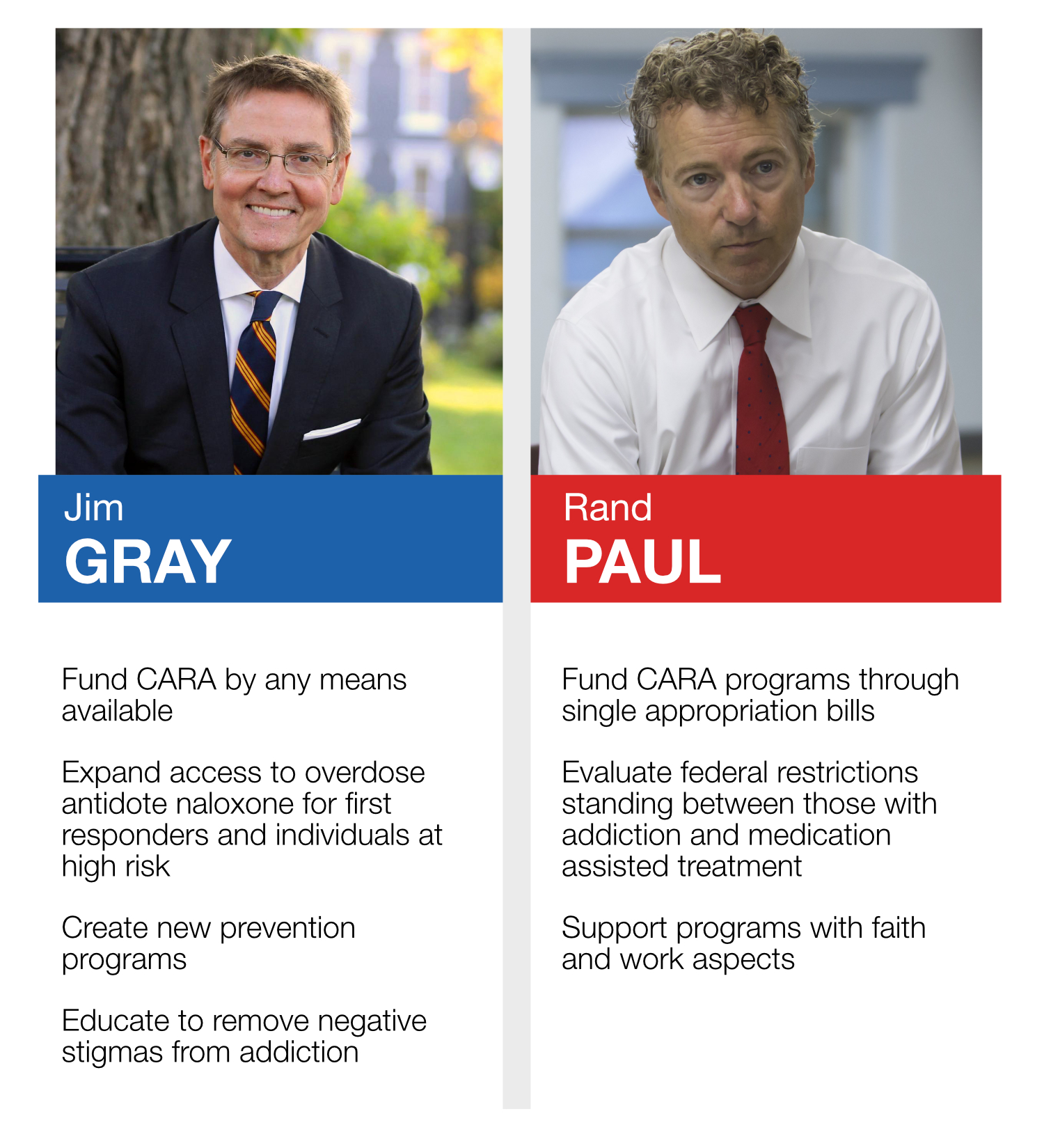 Alexandra Kanik | Ohio Valley ReSource
Alexandra Kanik | Ohio Valley ReSource“Definitely in the more rural settings in Kentucky,” he said. “We need to expand our resources and offer more elements of treatment.”
That’s been a topic in the race for U.S. Senate in the Bluegrass State.
Jim Gray, the Democratic nominee, said he developed his plan to address the opioid epidemic at his current job as Lexington’s mayor.
“Prevention, treatment and recovery,” he said. “Our recovery clinics are overwhelmed and we’ve got to give them more resources.”
To get those resources, Gray said he would call for the full funding of the recently passed Comprehensive Addiction Recovery Act, or CARA.
“The Congress passed the legislation. The Senate passed the legislation. But they didn’t fund it,” Gray said. “What good is legislation if you pass it and you don’t fund it?”
He has criticized his opponent, Republican incumbent Senator Rand Paul, for voting against an omnibus spending bill which would have provided money to CARA.
Paul defended his vote during a debate broadcast by Kentucky Educational Television with a claim that omnibus bills contribute to the national debt.
“What we need to do is actually pass individual appropriation bills,” he said “And then CARA would have been in an individual appropriation bill, which I would have supported.”
He also said the government needs to evaluate restrictions between medication assisted treatment and those seeking help.
And programs that give jobs to those in recovery would receive his support.
“Part of the cure is as we get them off drugs, showing them what it’s like to work.’”
Ohio: Credit for CARA
Addiction specialists in Ohio agree that there is not enough access to treatment.
Dr. Joseph Gay, Executive Director of the non-profit Health Recovery Services in Athens, said he too frequently encounters those in need who can’t afford treatment.
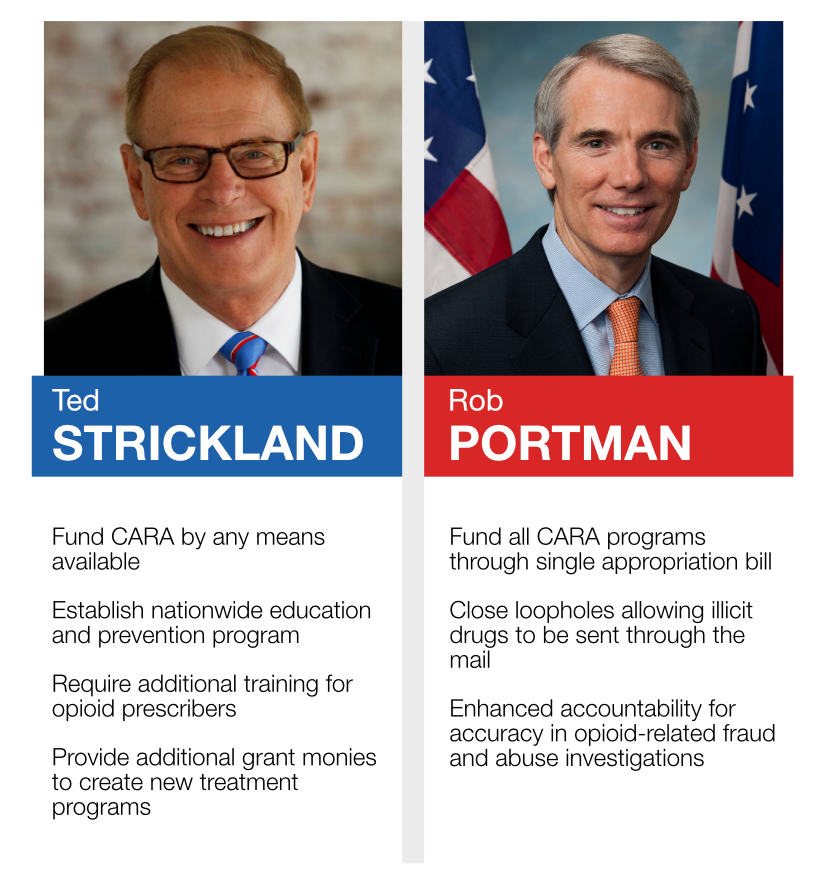 Alexandra Kanik | Ohio Valley ReSource
Alexandra Kanik | Ohio Valley ReSource“There are not quite enough resources to provide treatment to people who do not have Medicaid.”
He has been paying attention to the race for U.S. Senate in Ohio because both candidates have reached out to discuss the issue with him.
“They both have recognized the problem and both are saying positive things,” Dr. Gay said.
Ted Strickland, the Democratic nominee and former governor, wants more resources in Ohio by fully funding CARA immediately.
“We cannot fight this scourge of drug addiction without communities having the resources they need at the local level,” he said.
In a dynamic similar to the Kentucky Senate race, Strickland has criticized his opponent, Republican incumbent Senator Rob Portman, for voting against the funding bill that included money for CARA.
Portman called that funding bill a partisan political game. And he defended his vote in a recent debate sponsored by The City Club of Cleveland.
“I just got $37 million into the short-term budget between now and December 9th,” he said.
Additionally, Portman helped write CARA and continues to call for more funding.
He used his ad campaign to inform voters what other aspects of the epidemic he would address.
“Empowering law enforcement and stopping the over-prescribing of painkillers,” he said in the ad, “we can turn the tide.”
Strickland has proposed similar measures and like Hillary Clinton he wants nationwide education programs.
“Many of the deaths are occurring because people using these drugs do not know what they’re taking,” he said.
West Virginia: Addiction’s Workforce Effects
Matt Boggs, Executive Director of Recovery Point West Virginia, has a first-hand view of the opioid epidemic in the Mountain State.
The treatment center has more resources available today than in years past. But those seeking help still face month-long waiting lists.
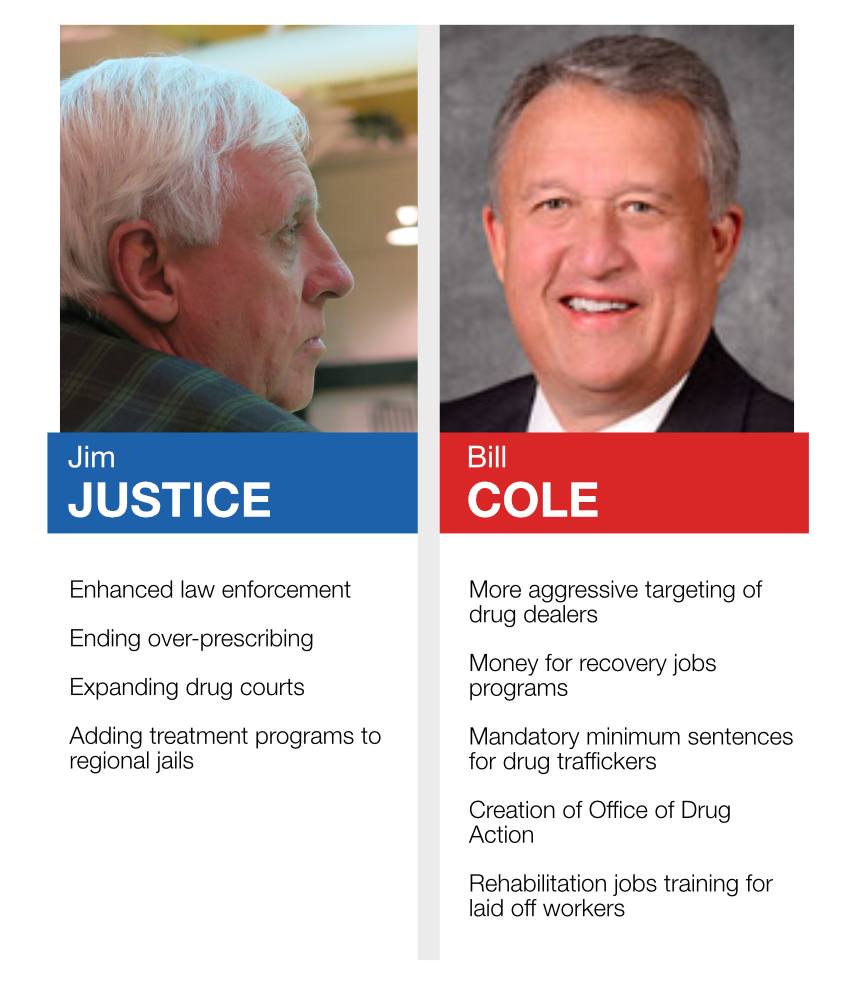 Alexandra Kanik | Ohio Valley ReSource
Alexandra Kanik | Ohio Valley ReSource“That includes our Huntington location for men, our Bluefield location for men,” Boggs said. “Our waiting list for the Charleston Women’s facility, we’re experiencing a rather large waiting list for that.”
In the race for governor, Boggs is hoping both major-party candidates will invest in treatment if elected.
“Until we continue to pump resources into it, we’re not going to get anywhere,” he said.
Democrat Jim Justice and Republican Bill Cole have released plans to address the epidemic. Both put emphasis on law enforcement first.
In Justice’s plan listed on his campaign website, the first bullet point is: “Stop the flow of out-of-state drug dealers that are poisoning our people.”
Cole’s “7-Point Action Plan to Combat West Virginia’s Drug Epidemic” first calls for a special legislative session to immediately deal with the issue. The second point is “work with the Legislature to pass harsher penalties” for drug trafficking, which includes mandatory minimum sentencing.
During their first debate, organized by the AARP, Justice touched on the connection between the addiction crisis and job creation.
“We have a real problem,” he said. “Our workforce is a real problem, but with drugs. We’ve got to fix this.”
In an endorsement from the National Association of Social Workers West Virginia chapter, the campaign details Justice’s plans to provide treatment.
Highlights include restoring funding previously cut for treatment programs, limiting access to prescription painkillers in favor of alternate pain treatment, and adding treatment programs to regional jails.
Cole went into the nuance of his plan during the debate.
While vowing to aggressively go after drug dealers, he promotes directing funds to programs that give jobs to people in recovery.
“That’s what we always miss,” Cole said. “We get them out of treatment and then can’t get them back to work because of a felony conviction.”
The remaining points in his action plan call for: support for drug courts; creating an Office of Drug Action; training idled workers for rehabilitation jobs; repurposing existing buildings for treatment centers; and improvements to prevention programs.
Presidential Race: Education and “A Wall”
During a July 2015 Conversation with the Candidate forum –a special series broadcast by WMUR-TV in New Hampshire— Democratic nominee Hillary Clinton laid down the foundation of what would later become her “Initiative to Combat America’s Deadly Epidemic of Drug and Alcohol Addiction.”
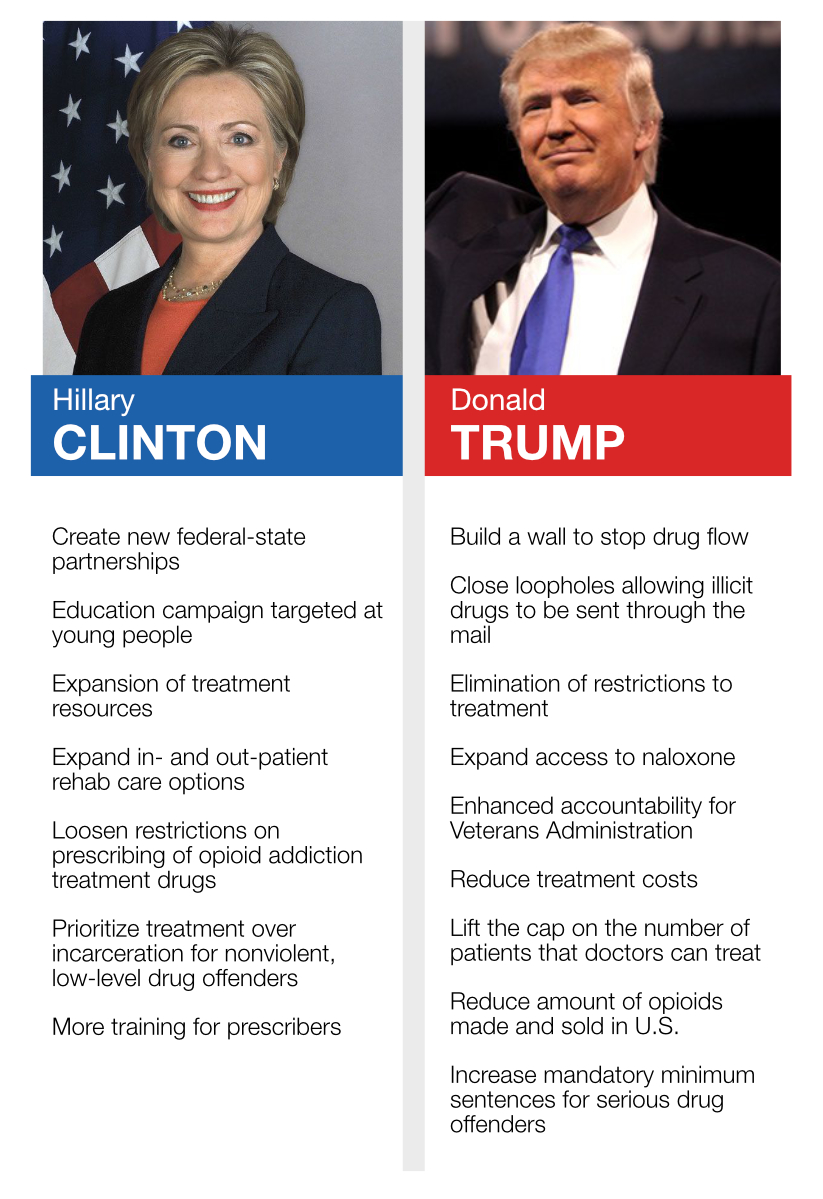 Alexandra Kanik | Ohio Valley ReSource
Alexandra Kanik | Ohio Valley ReSourceNew Hampshire has seen a surge in heroin use, and the combination of the crisis and the state’s tradition of hosting the nation’s first presidential primary likely helped put the issue on the presidential campaign agenda.
When asked by a voter in the crowd about the epidemic, Clinton said her plan would lead with a nationwide discussion about addiction.
“I want us to have a very broad-based education information campaign because some young people don’t truly understand the risks.”
She then said there would be a need for a major expansion of treatment resources.
“When a young person says that he or she is ready, they want help, very often they can’t find help.”
The expansion included a $10 billion proposal when Clinton released the full initiative in a September 2015 opinion piece published in the New Hampshire Union Leader.
A total of $7.5 billion would go toward state-designed plans to expand treatment “that make most sense for their communities’ needs.”
Then $2.5 billion would go toward boosting the Substance Abuse Prevention and Treatment Block Grant by 25 percent so communities could apply for immediate relief.
The remaining three points in her five-point initiative involve ensuring all first responders have access to the potentially life-saving drug naloxone, creating additional requirements for opioid prescribers, and prioritizing rehabilitation and treatment over prison when appropriate.
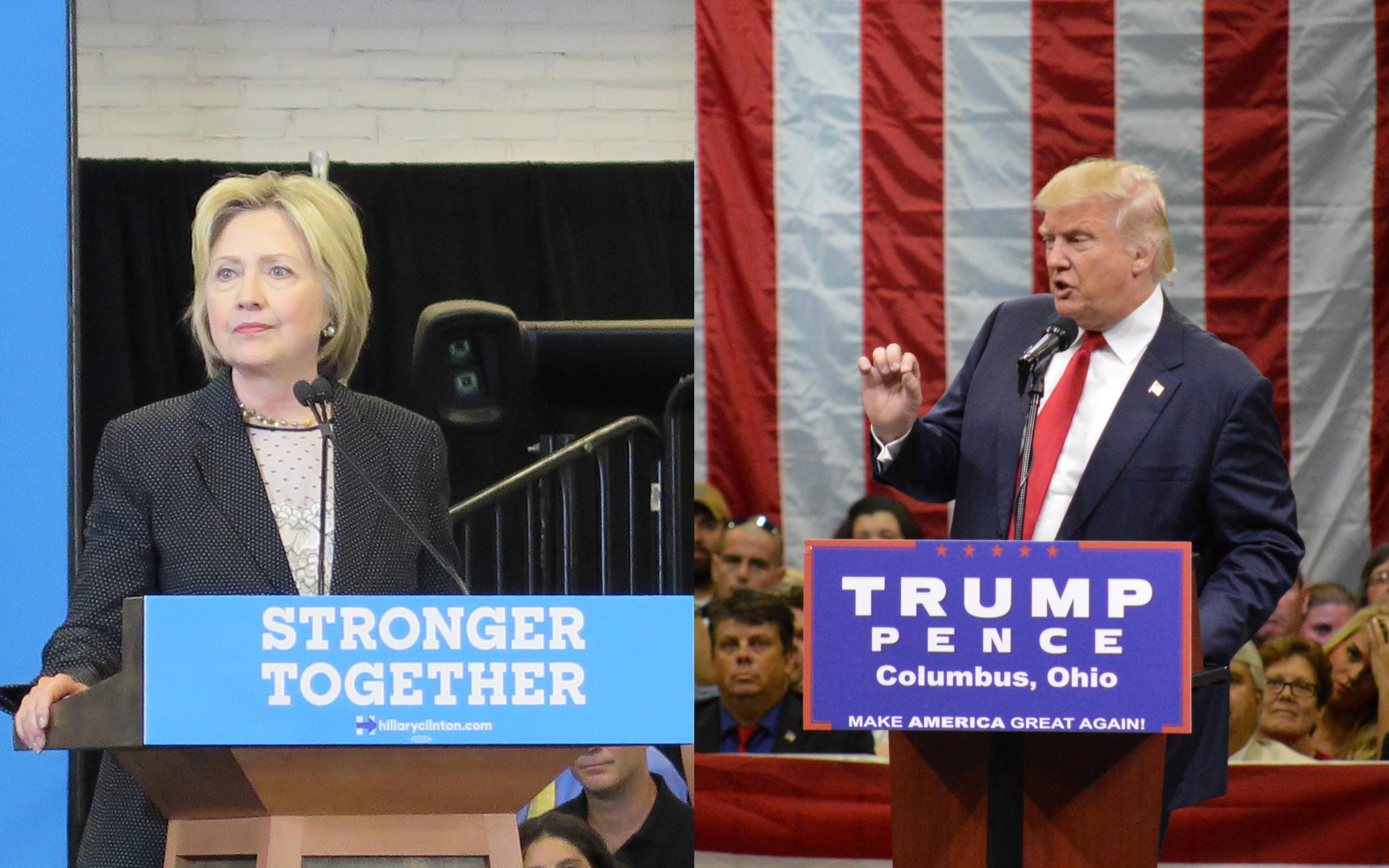
Until late in the campaign, Republican nominee Donald J. Trump’s only policy items on the addiction crisis were to build a wall along the southern border to deter drug trafficking and to provide an unspecified amount of money for additional resources.
But Trump later fleshed out his plan during a rally in New Hampshire on October 15 carried by C-SPAN.
Law enforcement takes the lead in the proposal, as the border wall is still central. Additionally, Trump would implement mandatory minimum sentences for drug trafficking crimes and close regulation loopholes which can result in illicit drugs entering the country by mail.
He also proposed additional resources for those suffering with addiction.
“We’ll make sure they have the top treatment and get better,” he told the crowd.
The plan also calls for an evaluation of regulations which could keep patients from medication assisted treatment and regulations that make treatment unaffordable.
“I would dramatically expand access to treatment slots and end Medicaid policies that obstruct in-patient treatment,” Trump said.
He credits the “tough on crime, empathetic to addiction” policies to running mate Mike Pence, who made efforts to implement similar policies while governor of Indiana.
The third-party candidates in the race have mentioned the opioid epidemic during their campaigns as well.
Libertarian Gary Johnson’s website calls for the legalization of marijuana as a possible alternative to opioid painkillers.
“The health benefits of cannabis in pain treatment has already proven to be safer and less addictive than current pain medications such as opioids.”
In a response to a Cox Media questionnaire, Green Party candidate Jill Stein called for addiction to be treated as a public health crisis and for pharmaceutical companies to be held accountable.
“I would stop big pharmaceutical companies from overcharging for prescription drugs and pushing drug use beyond what is medically necessary.”
The View From the Front Lines
The addiction treatment experts I spoke with say it’s up to politicians to follow through with their campaign promises. Dr. Joseph Gay added that those working on the issue also have a role in holding officials accountable.
“So the candidates will understand that it’s an important issue,” he said. “It’s a serious problem in this area and throughout (Ohio).”
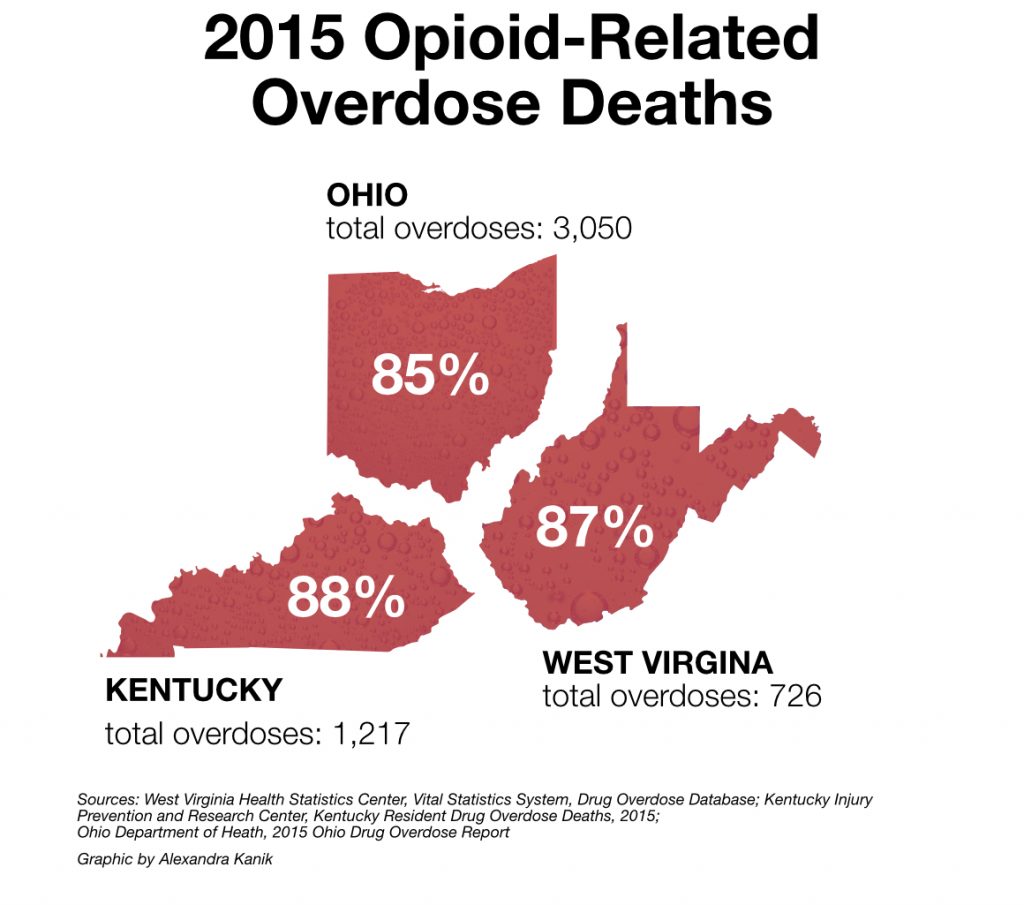 Alexandra Kanik | Ohio Valley ReSource
Alexandra Kanik | Ohio Valley ReSourceFor Matt Boggs and Recovery Point West Virginia, that role includes an open invitation to any politician to come see what treatment resources look like in action.
“You will leave with a changed view on what recovery looks like when you see the smiling faces of a hundred men who were once hopeless and now they have hope,” he said.
It also means sharing personal stories of battling opioid addiction and success through recovery, stories like Pat Fogarty’s: He’s not just an employee at The Healing Place, he’s also a former client recovering from an opioid addiction.
“If I didn’t have that opportunity for recovery and the opportunity to go to The Healing Place, I would certainly be dead right now,” he said.
That may be the strongest reminder of what’s at stake.

